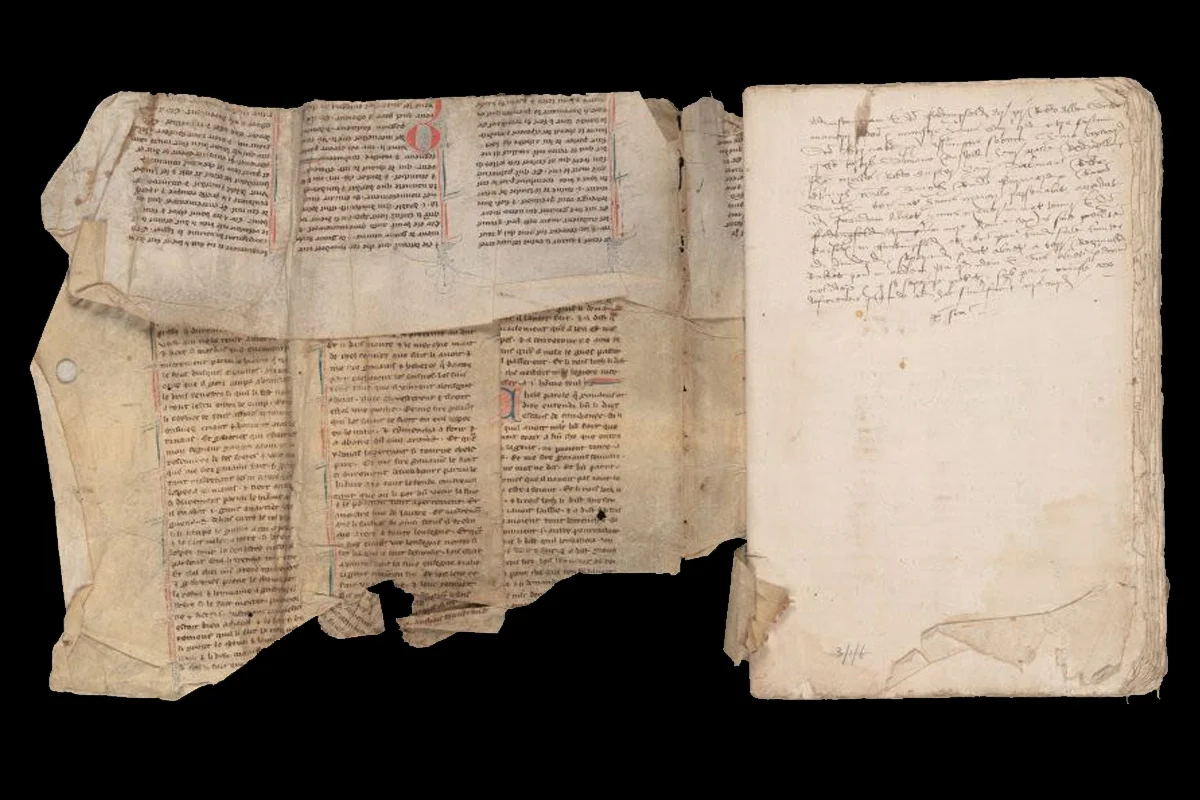Fragments of a medieval manuscript dating to the 14th century have been identified as containing rare stories of Merlin and King Arthur.
The rare manuscript was first found in 2019 by researchers at Cambridge University Library, which is part of the Suite Vulgate du Merlin, a French-language sequel to the legend of King Arthur and part of the Lancelot-Grail cycle.
According to experts, less than 40 copies of the manuscript survive which were handwritten individually by medieval scribes.
The example identified at Cambridge University Library dates from between AD 1275 to 1315 and survived after being stitched during the 1500’s into a property record book from Huntingfield Manor in Suffolk.
In a new ground-breaking study using Multispectral Imaging (MSI), CT Scanning, 3D Modelling and Virtual Unfolding, Cambridge University Library’s Cultural Heritage Imaging Laboratory (CHIL) have been able to access the text on the manuscript, which had been folded, torn, and sewn into the book’s binding.
Dr Irène Fabry-Tehranchi at Cambridge University Library, said: “It was first thought to be a 14th century story about Sir Gawain, but further examination revealed it to be part of the Old French Vulgate Merlin sequel, a different and extremely significant Arthurian text.”
Written in Old French, the fragment belongs to the tradition of Arthurian romances popular with noble audiences. It tells two episodes from the end of the Suite Vulgate du Merlin – the first recounting the victory of the Christians against the Saxons at the Battle of Cambénic.
The second episode is set at the Feast of the Assumption of the Virgin Mary, with Merlin appearing at Arthur’s court disguised as a harpist. A translation of the text reads:
“While they were rejoicing in the feast, and Kay the seneschal brought the first dish to King Arthur and Queen Guinevere, there arrived the most handsome man ever seen in Christian lands. He was wearing a silk tunic girded by a silk harness woven with gold and precious stones which glittered with such brightness that it illuminated the whole room.”
Maciej M Pawlikowsk, Head of The Cultural Heritage Imaging Laboratory (CHIL) at Cambridge University Library said:
“This project was a fabulous opportunity to employ all possible advanced imaging techniques from our photographic arsenal. And each of them brought something very important to light. This resulted in the creation of a set of unique digital objects which placed the original fragment in a whole new context and has transformed our understanding of it.”
Header Image Credit : University of Cambridge
Sources : University of Cambridge







